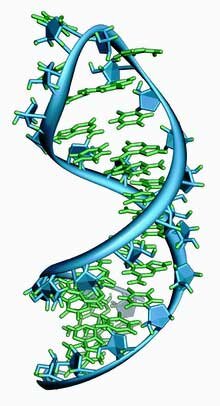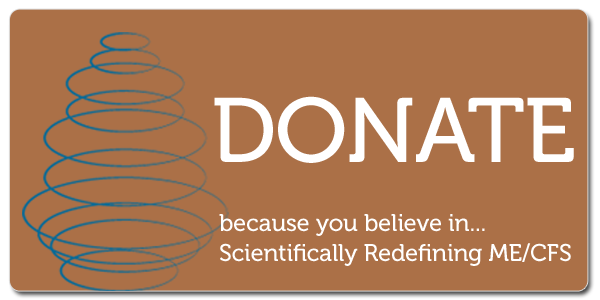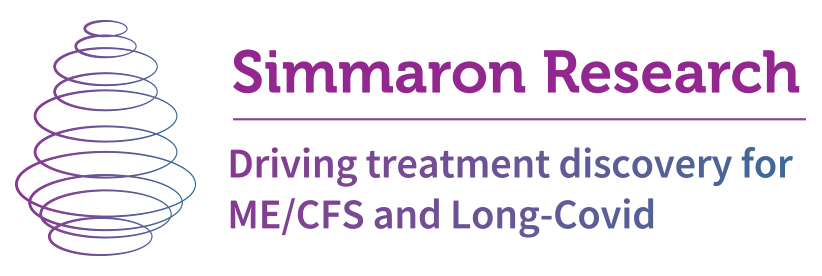Could "Junk DNA" Be Causing Chronic Fatigue Syndrome / Myalgic Encephalomyelitis?
 It seems like every time you turn around another part of the genome pops up. It's amazing how far our knowledge of the human genome has progressed since the Human Genome Project was completed just 15 years ago. Thankfully the small band of researchers involved in chronic fatigue syndrome / myalgic encephalomyelitis (ME/CFS) seem to be keeping up with the latest findings.Dr. Scheibenbogen seems intent on ploughing new ground. First she re-energized the search for autoantibodies in ME/CFS. Then she examined the effectiveness of a promising treatment called immunoadsorption. With her latest study she and her colleagues at Institute for Medical Immunology, Charité-Universitätsmedizin in Berlin became the first in this disease to examine a peculiar part of our genome called long non-coding RNA's.http://simmaronresearch.com/2018/04/hope-mecfs-autoimmune-subset-german-researcher-steps-forward/When most people think of RNA they're probably thinking of the messenger RNA (mRNA) which carries the genetic code from the DNA in the nucleus of our cells to ribosomes. The ribosomes then translate the mRNA into proteins - which then do the work of our cells.
It seems like every time you turn around another part of the genome pops up. It's amazing how far our knowledge of the human genome has progressed since the Human Genome Project was completed just 15 years ago. Thankfully the small band of researchers involved in chronic fatigue syndrome / myalgic encephalomyelitis (ME/CFS) seem to be keeping up with the latest findings.Dr. Scheibenbogen seems intent on ploughing new ground. First she re-energized the search for autoantibodies in ME/CFS. Then she examined the effectiveness of a promising treatment called immunoadsorption. With her latest study she and her colleagues at Institute for Medical Immunology, Charité-Universitätsmedizin in Berlin became the first in this disease to examine a peculiar part of our genome called long non-coding RNA's.http://simmaronresearch.com/2018/04/hope-mecfs-autoimmune-subset-german-researcher-steps-forward/When most people think of RNA they're probably thinking of the messenger RNA (mRNA) which carries the genetic code from the DNA in the nucleus of our cells to ribosomes. The ribosomes then translate the mRNA into proteins - which then do the work of our cells. Not all RNA produces proteins, however. Formerly termed "junk DNA", non-coding RNA's - RNA's which do not encode proteins - make up a substantial part of our genome. (They lack the "reading frames" necessary for the process of translation from RNA to protein to begin). Long non-coding RNA's (lncRNA) are particularly long pieces of RNA (>200 nucleotides long) which do not encode proteins.While their presence has been known for decades, it wasn't until the 1990's that the first hint of the role they play in regulating gene expression and epigenetics appeared. Research since then has shown that lncRNA's play an important role modulating the activity of transcription factors which turn the expression of our genes on and off.Epigenetics - heritable changes in gene expression that do not involve changes in the underlying DNA sequence - is all the rage now. The ability of infections and other stressors to turn genes on or off via epigenetics presents an intriguing explanation for how an infection could result in ME/CFS. Because lncRNA's can regulate the epigenetic process, they could provide even more basic insights into how ME/CFS began.LncRNA's can also catalyze biological reactions and respond to cellular signals. Their extreme flexibility allows them to interact with proteins, DNA and RNA to affect many physiological processes. One review stated they, "can impact almost all physiological functions." Another review called them, "a new and crucial layer of biological regulation".They're certainly providing a fresh look at complex diseases. Search for long non-coding RNA's in PubMed and you'll get a long list of diseases they may be implicated in. A recent review of the role lncRNA's may play in cancer called them, "new players in the old battle against cancer". Some regulate mitochondrial synthesis and energy production. Pathogens can induce the production of lncRNA's in humans that then promote viral survival.It's become increasing apparent that they can play a role in fundamental developmental processes that can produce chronic disease states. One review called them "arguably the hottest area of RNA research" today. Still much remains to be learned about the roles they play.
Not all RNA produces proteins, however. Formerly termed "junk DNA", non-coding RNA's - RNA's which do not encode proteins - make up a substantial part of our genome. (They lack the "reading frames" necessary for the process of translation from RNA to protein to begin). Long non-coding RNA's (lncRNA) are particularly long pieces of RNA (>200 nucleotides long) which do not encode proteins.While their presence has been known for decades, it wasn't until the 1990's that the first hint of the role they play in regulating gene expression and epigenetics appeared. Research since then has shown that lncRNA's play an important role modulating the activity of transcription factors which turn the expression of our genes on and off.Epigenetics - heritable changes in gene expression that do not involve changes in the underlying DNA sequence - is all the rage now. The ability of infections and other stressors to turn genes on or off via epigenetics presents an intriguing explanation for how an infection could result in ME/CFS. Because lncRNA's can regulate the epigenetic process, they could provide even more basic insights into how ME/CFS began.LncRNA's can also catalyze biological reactions and respond to cellular signals. Their extreme flexibility allows them to interact with proteins, DNA and RNA to affect many physiological processes. One review stated they, "can impact almost all physiological functions." Another review called them, "a new and crucial layer of biological regulation".They're certainly providing a fresh look at complex diseases. Search for long non-coding RNA's in PubMed and you'll get a long list of diseases they may be implicated in. A recent review of the role lncRNA's may play in cancer called them, "new players in the old battle against cancer". Some regulate mitochondrial synthesis and energy production. Pathogens can induce the production of lncRNA's in humans that then promote viral survival.It's become increasing apparent that they can play a role in fundamental developmental processes that can produce chronic disease states. One review called them "arguably the hottest area of RNA research" today. Still much remains to be learned about the roles they play.
"Remarkable" Finding
The expression signature of very long non‑coding RNA in myalgic encephalomyelitis/chronic fatigue syndrome. Chin‑An Yang1,2,3,4 , Sandra Bauer5, Yu‑Chen Ho3, Franziska Sotzny5, Jan‑Gowth Chang1,3,4† and Carmen Scheibenbogen. Transl Med (2018) 16:231 https://doi.org/10.1186/s12967-018-1600-x
In this study - the first of its kind in ME/CFS - Dr. Scheibenbogen examined the expression of ten very large lncRNAs (> 5 kb) involved in immune regulation, or which influence genes involved in the stress response and/or metabolic and neurologic processes.The authors were clearly surprised by their findings. After all, they'd simply taken ten lncRNA's that they thought, based on findings in other diseases, might play a role in ME/CFS.In a finding they called "remarkable", the expression of those ten lncRNA's was enough to distinguish ME/CFS patients from healthy controls. In fact, the expression of any two of three of these lncRNA's (NTT, MIAT and EMX2OS) was all that was needed to pick out most ME/CFS patients. Then seeking to understand if the chronic illness state present in ME/CFS could be turning these lncRNA's on by exposing them to biological stressors known to be present in ME/CFS. They found that punishing cell lines with oxidative stress did, in fact, increase the expression of the lncRNA's. Subjecting the cell lines to a viral stressor also increased expression of one of them. Doing it increased the expression of a gene associated with chronic inflammation and blood vessel dysfunction - two problems that are believed to be present in ME/CFS.ME/CFS seems to revel in producing findings that baffle researchers and this study was no exception. The enhanced expression of one lncRNA (EMX2OS) was something of a mystery as it is rarely found in the cells (peripheral blood mononuclear cells) they examined. It is, however, increased in brain hypoxia; i.e. low oxygen levels in the brain - which Dr. Shungu's studies suggest may be present in ME/CFS.
Then seeking to understand if the chronic illness state present in ME/CFS could be turning these lncRNA's on by exposing them to biological stressors known to be present in ME/CFS. They found that punishing cell lines with oxidative stress did, in fact, increase the expression of the lncRNA's. Subjecting the cell lines to a viral stressor also increased expression of one of them. Doing it increased the expression of a gene associated with chronic inflammation and blood vessel dysfunction - two problems that are believed to be present in ME/CFS.ME/CFS seems to revel in producing findings that baffle researchers and this study was no exception. The enhanced expression of one lncRNA (EMX2OS) was something of a mystery as it is rarely found in the cells (peripheral blood mononuclear cells) they examined. It is, however, increased in brain hypoxia; i.e. low oxygen levels in the brain - which Dr. Shungu's studies suggest may be present in ME/CFS.
Study Suggests “Bad Energy” is Core Problem in Fibromyalgia and Chronic Fatigue Syndrome (ME/CFS)
Finally, the authors noted that it took just three lncRNA's (NTT, MIAT, and EMX20s) to do what it took Kerr 88 genes and Naviaux 8-13 metabolites to do - differentiate ME/CFS patients from healthy controls. One wonders if Scheibenbogen's examination of lncRNA's is getting at some basic components of ME/CFS.
Treatment Implications
No direct treatment implications were mentioned. In the short-term they're viewed more as providing excellent diagnostic biomarkers. For instance, lncRNA's are now being used to one of most difficult diagnostic scenarios of all - prostate cancer. They're now being used in men with high PSA levels and negative biopsy results.Direct treatments based on lncRNA's are probably years away but should be noted that lncRNA's are a very active area of research for a good reason: turning down their expression could turn off basic processes that cause disease. The author of a recent study which found that LncRNA's play a role regulate fat metabolism reported:
“We are still in the early stages of figuring out how lincRNAs function in human disease, but what used to be considered ‘junk’ in the genome may actually point us towards the jackpot of developing effective therapeutic approaches for cardiometabolic diseases,” Jennie Lin, MD, MTR
This new exploration of ME/CFS patient's genomes further substantiates the notion that ME/CFS is a disease of immune dysregulation. Given the study's strong results surely more lncRNA study in ME/CFS is on the way. 
